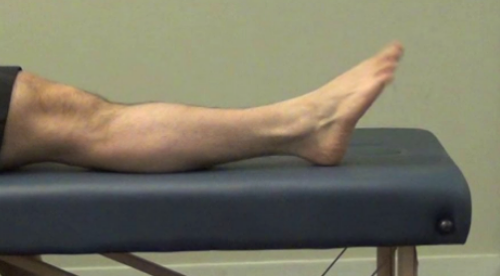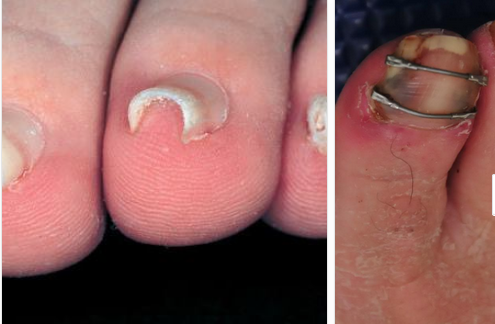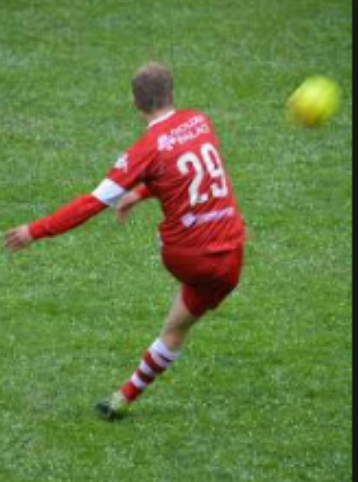Excerpt: "So if your remedy for this runner is to just add a "loaded Farmer's carry" on the opposite side, your thinking is right if it is a strength issue in the contralateral hip. IF it is an endurance issue you need a lighter weight and more unilateral Farmer's carrying. If it is a weight management issue, you may be poking the bear. Maybe it is a multitude of issues. "
There are loads of folks taking 'this' seminar series, or 'that' one, striving for 'this' certification or 'that' one. This is trememdous, it keeps the professions moving. But, all the technique in the world doesn't mean a thing if one cannot see, feel, test, or most importantly comprehend and express a client's primary flaw(s) in mobility and stability. The right tools in unskilled hands are useless, and arguably present risks for clients.
We have said this many times, too many for certain, that what you see in your client is not their problem, it is their means of moving within their present abilities and dysfunctions for whatever reason (ie. lack of skill, endurance, strength, power etc). We have also said that a mere exercise, test or screen doesn't take one to the end zone either, they are also a mere piece of the bigger puzzle. An exercise or test also may only tell you what they are capable (or incapable of), but not why their pain or challenges exist. Thus, taking a failed test, and making it your client's new exercise does not necessarily create an environment for a remedy, it can in fact create one of a more durable compensation. And that is ok, if that is what you are searching for, if that is the emergency bandaid you need before the marathon in 3 weeks, but if you are swinging for the remedy, you may have to trudge the extra yard.
Last week we taught about some basic hip principles during our online class. Take this runner photo for example, below is a basic principle you must glean from the photo. It is a principle based off of remedial joint biomechanics, as incomplete as it is, the thought process should be one you consider and certainly comprehend. In this photo, this runner appears to have insufficient stance phase hip abductor (HAM) strength or endurance. This is in part notable because of the adduction of the contralateral thigh (this is a faulty swing leg pendulum mechanical event, and will undoubtedly lead to a cross over gait and a plethora of other gait problems).
Here is one question that should always come to mind:
Are the stance phase hip abductors strong enough, or have enough endurance, to offset the body mass ? (see the line diagrams). Look at the diagram formula, and let us discuss.
If the pelvis is to remain level (mostly), the D1 and D2 lever arms do not change, the D1 lever arm is always shorter and thus the HAM (Hip abductor muscle strength) will always have to be a large number to offset the BQ (body weight). If BW gets too large, there will be no HAM large enough to offset BW and the pelvis will dip, as in this runner's photo. So, it can be a weight issue, a HAM strength issue, a HAM endurance issue or both. Someone is going to win, and someone is going to pay if the system is not balances and durable. We see this in the failed frontal plane running mechanics all the time in our offices, this is a plague in runners. It is a major source of the spine, pelvis, hip knee and foot issues we see in runners. To fix these clients, you have to understand their mechanics. The latest rehab toy that you bought at after a jazzy seminar pitch doesn't replace the requisite knowledge one needs to have to understand a clients problem. Screens won't get you all the way, tests and pattern assessments won't get you all the way either. You have to do your learning part, the knowledge must precede your interventions.
So if your remedy for this runner is to just add a "loaded Farmer's carry" on the opposite side, your thinking is right if it is a strength issue in the contralateral hip. IF it is an endurance issue you need a lighter weight and more unilateral Farmer's carrying. If it is a weight management issue, you may be poking the bear. Maybe it is a multitude of issues. But, if it is a mobility issue, adding your Farmer's carry doesn't guarantee you will get the client to the promised land, and if it is a stability issue, perhaps you get close.
* This article does not chase down deeper evaluation concepts such as narrow step width, femoral torsions, tibial torsions, swing phase gait mechanic failures, sagittal plane (A-P pelvis control) or rotational plane challenges to the system (failure to control limb rotation at the hip or at the foot) just to name a few. This article ONLY looked at the frontal plane concept, so hopefully one is gleaning how complex these biomechanics are. Hopefully one is gleaning at this point that this is not a spot corrective exercise prescription game, "here is the visually disturbing pattern, here is the exercise to eclipse that pattern". There does need to be some brain engagement in the process to do this right, and this means education and hands on clinical examination.
The Farmer's carry is a beautiful exercise when placed correctly in a client's regimen. There are many who say we take this game too completely, too precisely, too far, that we make this too complex and if one listens to us that one might develop stage fright to execute any intervention. Well, sorry, but we stand our ground. This is not an easy game. Too many people come to see us after intermediate regimens of training and lifting develop problems, problems that were not present at the initiation of their attempts to better they body. If one is being honest with themselves, they should ask themselves, could this have been prevented? Was the work prescribed part of the eventual deliverance? Injuries occur when loads exceed durability, skill, endurance, strength, power etc. One could make the case that if the prescriptions are correct, if the progressions are correct, that injury should be a rare thing. But injuries are not uncommon and those of us who are prescribing corrective exercises and workout regimens have to take self accountability if we are being honest with ourselves.
Don't get us wrong, we are just as much a pupil on this bus as anyone else, we make mistakes all the time. But everyday we force ourselves to pause, consider, double check, reassess, to make sure that the developing patterns are sound, strong, durable and progressive, and ready for more. And when we get it wrong, we reexamine, and try again. It is all one can do.
Stir about your own clinical world with a jaundiced, questioning eye, and you should do just fine. And if you cannot get it right, get it close, prescribe something safe and watch and test for clues of developing problems in the near future. This we all call . . . . learning/ practice.
"All the technique in the world doesn't compensate for the inability to notice"- Elliott Erwitt
Shawn Allen, one of the gait guys

























